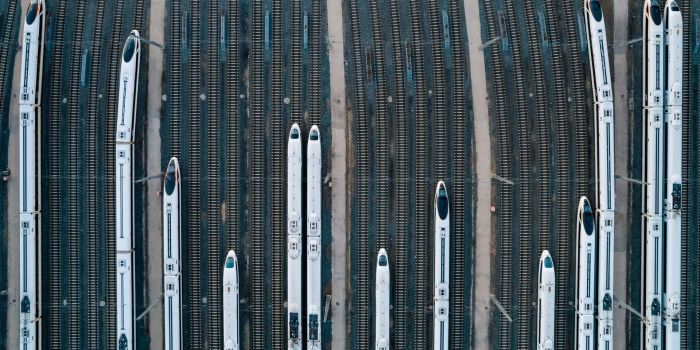In an AI breakthrough, China’s and the World’s largest high-speed railway network is now managed by an AI system in Beijing. This includes not only the operation but also the maintenance of the rail network.
According to the engineers spearheading the project, the system has already achieved several milestones with an accuracy level of 89%.
The recently installed system is capable of processing large amounts of data in real time across the second-most populated country in the world and informs maintenance teams within 40 minutes if an abnormal situation arises.
A senior engineer employed at the infrastructure inspection center of the China State Railway Group, Liu Daoan, has hailed the system as efficient, stating, “This helps on-site teams conduct re-inspections and repairs as quickly as possible.”

Operating at 350 kilometers per hour, this is the fastest high-speed rail in the world. Thanks to AI, the number of minor track faults fell by 80% last year, and after the success of the model, the government plans to expand the network till it connects the entire country and aims to increase the speed to 400 kilometers per hour from next year.
The paper published by Liu Daoan notes that the amplitude of rail movement caused by solid winds also decreased significantly with the AI system.
More importantly, the primary concern that experts had when China was launching the high-speed railway has been effectively dealt with by AI, i.e., the maintenance of the railway tracks, which was assumed to be highly burdensome over the years. However, the installed AI system can predict faults and issue warnings successfully and correctly before the problem becomes a reality, enabling the railway staff to undertake maintenance in a timely manner.
Comparatively speaking, the railway network in the US faces challenges such as lack of maintenance, which was predicted but is still causing frequent safety risks. In the past 50 years, on average, derailments in the US have increased by 2,800 per year,
It is also worth noting that countries such as Germany and Switzerland were the first ones to recognize the need for AI in managing railway networks; however, the sheer size of the railway sets China’s case study apart. Foreseeing the need, China railway scientists collected raw data quite extensively, including records of train body movements, waveform values, meteorological records, and rail vibrations.

Previously, maintenance warnings were issued weekly; however, they are now issued daily owing to the improved efficiency of the technology employed, with new data being 85% more efficient.
With the population decline, rising costs, and aging population, AIAI-managed and operating systems will become more frequent across the globe, decreasing the burden on humans.


